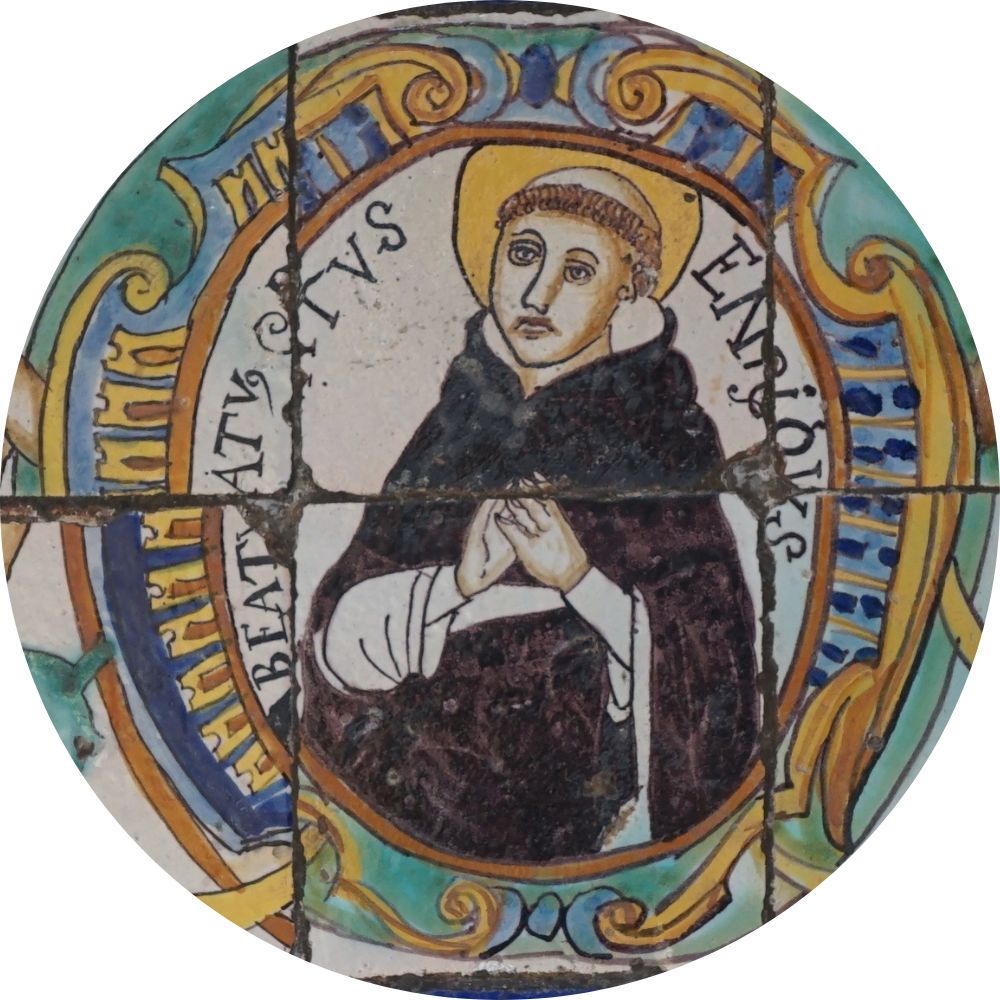Bl. Henry Suso
Bl. Henry Suso, priest and mystic
(1295/7-1366)
Henry was born on March 21, 1295, or 1297 in Constance to a noble family. His father, to honor his wife and her lineage, took her last name. At the age of thirteen, he entered a Dominican priory in Constance. This was where he received an education typical of those wishing to take vows. At the age of eighteen, he was given the opportunity to have a mystical conversion experience. Afterwards, Henry was sent for further studies in philosophy and theology, first at the Dominican priory in Strasbourg, then a course in theology at the Dominican General College in Cologne. After returning to his home priory in Constance, he was appointed as a lecturer. His teaching, however, attracted criticism - most likely because of his association with his Cologne teacher, Eckhart, whose teaching was judged and condemned in 1326-13.
It was probably during these years that Henry wrote a work defending Eckhart's teachings. This and other treaties were condemned by his opponents and considered heresy. In 1330. Henry went to the general chapter of the order in Maastricht to defend himself. Although the chapter fathers did not convict him, he was dismissed as a lecturer. Henry was Prior of the Monastery of Constance, and he and his community were sent into exile, where they stayed for seven years (1339-1346). This was the period of the biggest dispute between Pope John XXII and the Holy Roman Emperor. Around 1348, Henry was transferred to a monastery in Ulm, where he probably stayed until his death on January 25, 1366.
It was in Ulm that he edited his works and devoted himself to scientific activities. He left behind, for example, The Little Book of Eternal Wisdom, The Little Book of Truth and Life; the latter is autobiographical, showing, among other things, the mortifications undertaken by the monk, some very drastic. As he wrote, Jesus himself had to intervene that he was exaggerating in the spiritual exercises he was undertaking, that He did not expect him to do so.
In iconography, he is depicted wearing a Dominican habit, accompanied by various attributes: a stylus, the IHS engraved on his chest, a wreath of roses, and an image of the Virgin Mary. The first two attributes refer to a legend saying that as a sign of love for God, the mystic engraved the IHS sign on his chest. According to Dominican legends, a certain virgin Anna appeared in a rose bush to the child Jesus, who picked flowers and threw them at Henry, who was sitting by the bush. The roses, with which the blessed was showered, were meant to symbolize the suffering that God allowed on him, which Henry endured with humility and joy. There are known paintings depicting the scene of Bl. Henry’s handing over a heart to Baby Jesus. In addition, it is emphasized that even as a child Henry laid flowers before the statue of Mary. His Marian devotion was rewarded with a vision of the Mother of God appearing to him among the angels in glory.
Bibliography:
- Henryk Suzo, Życie, transl. W. Szymona, Poznań 1990.
- Henryk Suzo, Księga mądrości przedwiecznej, transl. W. Szymona, Poznań 1983.
- Henryk Suzo, Księga prawdy i inne pisma, transl. W. Szymona, Poznań 1989.
- Reddingius W., Heinrich Seusse de Mysticus, Utrecht 1923 .
- Heinrich Seuse: Studien zum 600. Todestag 1366-1966, ed. E. Filthaut, Cologne 1966 .
- Hamburger J.F., The use of images in the pastoral care of nuns : the case of Heinrich Suso and the Dominicans, „The Art Bulletin”. 71 (1989), issue 1, pp. 20-46.
- Misiurek J., „Złoty okres” niemieckiej mistyki, Lublin 1992, p. 93.
- Williams-Krapp W., Henry Suso’s Vita between Mystagogy and Hagiography, [in:] Seeing and Knowing. Women and Learning in Medieval Europe, 1200-1550, ed. A. Mulder-Bakker, Brepols 2004, pp. 35–48.
- McGinn B., The Presence of God. A History of Western Christian Mysticism, vol. 4: The Harvest of Mysticism in Medieval Germany, New York 2005, pp. 191–239.

